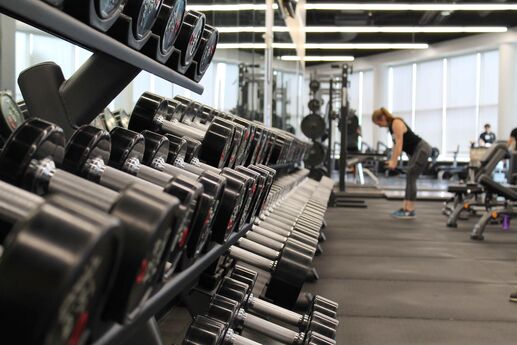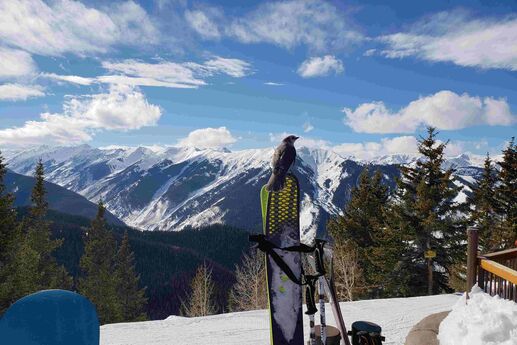Get a Jump on Your Fitness with Plyometrics
Elite athletes know plyometrics. Simply put, they know it improves athletic performance by making them quicker and more explosive. Once used in a small percentage of athletic programs, plyometrics are now an integral part of the elite athlete’s regimen, with everyone from Drew Brees to Kevin Durant to Tiger Woods swearing by them.
But the average gym-goer, no matter how fit, probably doesn’t fully understand them. While a plyo program has tremendous value, it is a highly specialized fitness activity that needs to be done in tandem with an overall strengthening program, and it needs to be done right.
The Basics
“Plyometrics capitalizes on strength,” says certified strength and conditioning specialist (CSCS) Gregory Haff, Ph.D., an exercise physiologist at West Virginia University who coaches Olympic weightlifters. In other words, make sure you have a strong base before embarking on a plyo program, especially in your legs, hips and core. If you’re doing plenty of power exercises like squats, lunges, leg presses, stiff-legged dead lifts, leg curls and core moves, then you’re ready.
For the beginner, Haff recommends doing plyos twice a week for 80-100 jumps (do cardio and weights on two to three other days). Your plyo program will consist of a 10- to 20-minute warm-up and only about 10 minutes of plyos. Haff advises a four-to-six week program before a sport season (not during one). If you’re not playing a sport, simply cycle in a month of plyometrics every three to four months.
Why So Limited?
According to Haff, fatigue cuts down your ability to engage the strength-shortening cycle, or SSC, which is what plyometrics is all about.
Any explosive movement involves the two phases of muscular contraction: the eccentric phase (muscle lengthening under tension) followed by the concentric phases (muscle being shortened). A pre-stretch of the muscle lengthens it and creates tension that can be used to increase the concentric contraction, which must immediately follow, or else the tension goes away as heat. Take, for example, the quick countermovement before jumping, when you rapidly switch from descending to ascending. The faster the muscle is stretched eccentrically, the greater the force on the subsequent concentric phase. In other words, the shortest amount of time spent on the ground (amortization) during a jump results in the greatest jumping performance.
Tire your muscles and you’ll lengthen the amortization, which then decreases the effectiveness of the plyometric exercise.
The Warm-up
Complete a dynamic 10- to 20-minute warm-up prior to plyos: high-knee walking, heels-to-butt walking, skipping, walking lunges, shuffling sideways, carioca (moving sideways in a grapevine movement of step, step behind, step in front), running backward with heels hitting butt, rope skipping, and finally dynamic stretches (neck rotations, shoulder rolls, arm rotations, trunk twists, hip rotations, knee rolls, ankle rotations and leg swings).
The Program
The following program was provided by Jim Radcliffe, CSCS, strength coach at the University of Oregon. Use a flat, cushioned surface, and rest for 30 to 60 seconds between each set.
|
Exercise |
# Reps |
# Sets |
|
1. Pogo |
10 |
3 |
|
2. Squat jump |
4 to 6 (first 2 weeks); then 6 to 8 |
2 (first 2 weeks) to 3 |
|
3. Rocket jump |
4 to 6 |
2 (first 2 weeks) to 3 |
|
4. Star jump |
4 to 6 |
2 (first 2 weeks) to 3 |
|
5. Galloping |
10 |
3 |
|
6. Fast skipping |
10 |
3 |
Pogo: Take upright stance with knees slightly bent, chest out and shoulders back. Jump straight up by projecting hips upward for height, using only lower portion of legs; you’ll resemble a pogo stick, with knees staying slightly bent throughout exercise. With arms bent at 90 degrees, swing them up for each jump to assist. Upon each takeoff, keep toes pointed up (instead of down).
Squat jump: Take relaxed, upright stance with feet about shoulder-width apart. Interlock fingers, and place palms against back of head. Flex downward to half-squat position, then immediately explode upward as high as possible, extending hips, knees and ankles to maximum length as quickly as you can. For first two weeks, pause between each jump.
Rocket jump: Take relaxed, upright stance with feet about shoulder-width apart. Slightly flex arms, and hold them close to body. Flex downward to half-squat position, then immediately explode upward as high as possible, extending whole body (including arms) vertically.
Star jump: Same as rocket jump, except extend limbs outward in all four directions away from body, arms pointed at 10 and 2 o’clock and legs at 7 and 5 o’clock.
Galloping: (For this and the following exercise, you'll need access to a large, open space.) Assume a standing position with one leg in front of the other. Gallop like a horse by pushing off with back leg and foot, and continue to keep same leg behind hips while maintaining other leg in forward position. One foot will always come off the ground before the other. Keep ankle locked to emphasize spring-loaded landing and takeoff. Switch position of legs after 10 gallops.
Fast skipping: Assume a relaxed standing position with one leg slightly forward. Skip as quickly as possible, maintaining close contact with the ground and eliminating air time.






